| Vintage Pulp | Dec 18 2023 |

You never know what you'll find if you go far enough up the Amazon.


Written, produced, and directed by Curt Siodmak, who was behind numerous monster features, including Bride of the Gorilla and Curucu, the tropical adventure Love Slaves of the Amazon, which premiered today in 1957, is a full color production about the search for a lost realm of warrior women and their priceless treasures. In order for the expedition to take place, semi-crazy Eduardo Ciannelli must convince staid Don Taylor that the Amazons exist. He reveals a golden statue as proof, which he'd obtained on a previous foray into the jungle, and after some back and forth, sufficient funds for the journey are obtained. Unfortunately, rumors of gold and diamonds have piqued the interest of local ruffians, who plan to hijack the expedition.
Are there actually Amazons? You bet. French actress Anna Maria Nabuco is their queen. Are there love slaves? Yup, one poor exhausted one, anyway, and Taylor looks ripe as a replacement as far as Nabuco is concerned. And is there treasure? There's that too. The movie's plusses include a pitched battle between the expedition and the hijackers while both their boats are mired in river mud, and various exteriors actually shot in Manaus, Brazil and the nearby rain forest. Additionally, the poster art by Reynold Brown is tops. On the minus side, we felt that intermittent veerings into comedy were pointless and unfunny. But on the whole, Love Slaves of the Amazons was better than we expected. Does that mean it was good? Define “good.”


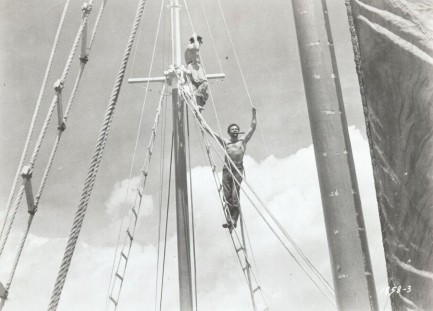

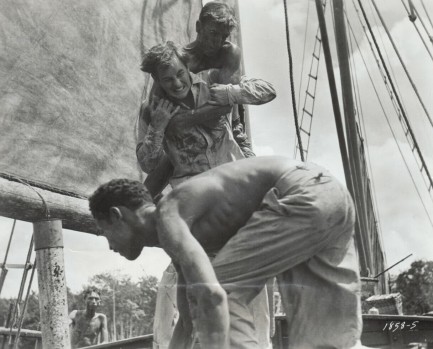
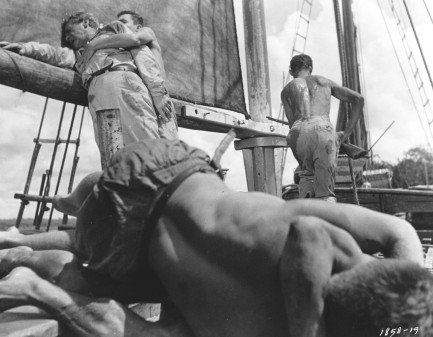
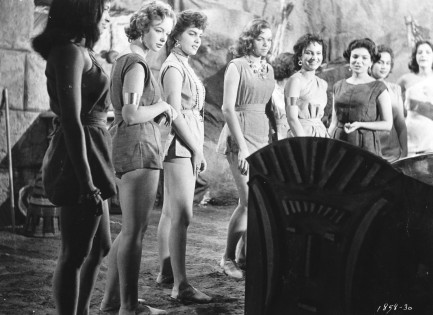
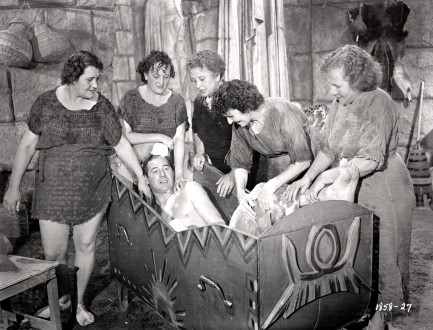



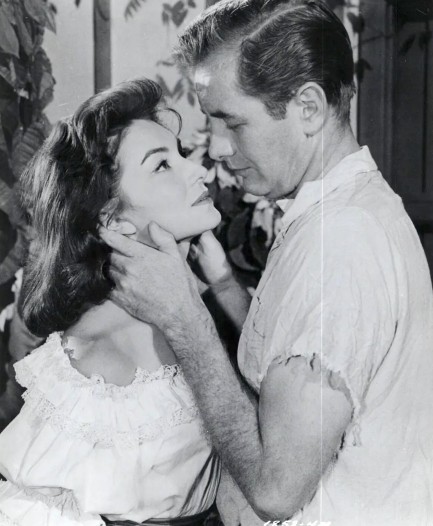
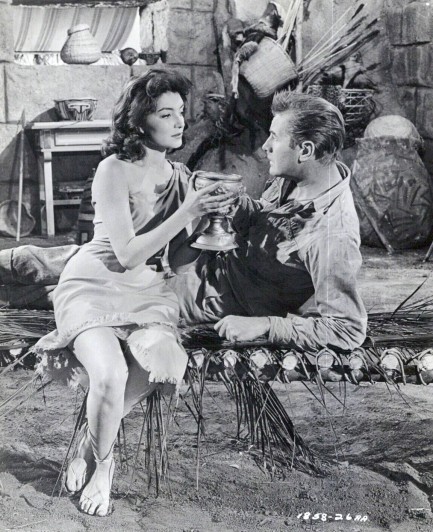

















| Vintage Pulp | Apr 21 2022 |

Only a king of cover art is fit for a queen of espionage.
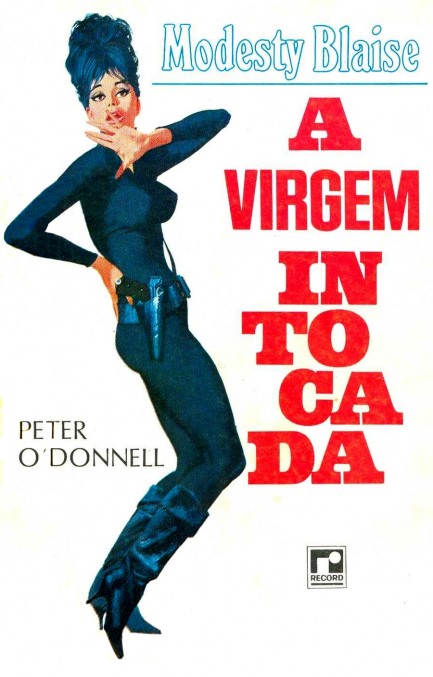
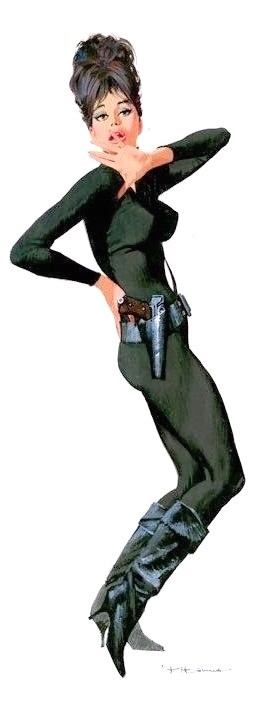 We said we'd show you a Brazilian Robert McGinnis cover for a Modesty Blaise novel, and here it is. What a nice piece of art. The English language editions lost their McGinnis fronts with book three of the Blaise series in 1969, but somehow Grupo Editorial Record managed to get his art for A virgem intocada, known in English as The Impossible Virgin, fifth in the series, 1971. Why the U.S. and British editions did not get this art is a mystery. We debated reading this tale and talking about it a bit, but by now you've gotten the gist of Modesty and Co. If not, just check here, here, here, or here.
We said we'd show you a Brazilian Robert McGinnis cover for a Modesty Blaise novel, and here it is. What a nice piece of art. The English language editions lost their McGinnis fronts with book three of the Blaise series in 1969, but somehow Grupo Editorial Record managed to get his art for A virgem intocada, known in English as The Impossible Virgin, fifth in the series, 1971. Why the U.S. and British editions did not get this art is a mystery. We debated reading this tale and talking about it a bit, but by now you've gotten the gist of Modesty and Co. If not, just check here, here, here, or here.Also, you see here a clean version of the art. We talked before about how we suspect Editorial Record sometimes used but didn't actually license art for its covers. Notice how the clean art, even at smaller size, has more detail—almost like Record had a McGinnis lithograph they photographed and reprinted? Seems to us that if the company had paid for the art they'd have ended up with a fully detailed cover. Circumstantial evidence—yes. But incriminating. Or maybe the printing process was simply not top level and detail was lost. Still, a nice cover.
| Vintage Pulp | Jan 27 2022 |

Tall and tan and young and lovely, and when she betrays them, each one she betrays goes, “Argh...”

This interesting piece of art was sent to us by a friend, Leonardo, and it comes from Brazilian publisher Record for Raymond Chandler's Perolas dao azar. The book comprises three Chandler stories, “Pearls Are a Nuisance,” “Finger Man,” and “The King in Yellow,” plus his crime essay, “The Simple Art of Murder.” If you're an avid reader of old literature, “The King in Yellow,” may sound familiar. It was the name of an 1895 anthology by Robert W. Chambers, the best-selling U.S. author of the latter half of the nineteenth century, and the source of certain motifs used in H.P. Lovecraft's Cthulhu Mythos. Chandler's story isn't supernatural, but it does allude to Chambers' work.
The cover art is by Robert McGinnis and was previously used on Shell Scott's 1971 novel Dig That Crazy Grave. Around then Record began spicing up some of its paperbacks with McGinnis art. We don't know if he was compensated for his work. We've talked about this issue before, but long story short, we just can't see an economic win for Record in buying McGinnis's art. In a country as big as Brazil some artist could have painted a nice cover—and cheaply. Probably more cheaply than licensing art from McGinnis. We don't know how it all worked, so we're not saying Record stole the art, but still, you have to wonder. Thanks for sending this over, Leonardo.
The cover art is by Robert McGinnis and was previously used on Shell Scott's 1971 novel Dig That Crazy Grave. Around then Record began spicing up some of its paperbacks with McGinnis art. We don't know if he was compensated for his work. We've talked about this issue before, but long story short, we just can't see an economic win for Record in buying McGinnis's art. In a country as big as Brazil some artist could have painted a nice cover—and cheaply. Probably more cheaply than licensing art from McGinnis. We don't know how it all worked, so we're not saying Record stole the art, but still, you have to wonder. Thanks for sending this over, Leonardo.
| Vintage Pulp | Dec 9 2021 |

It's a carnaval of mayhem in Brazil.
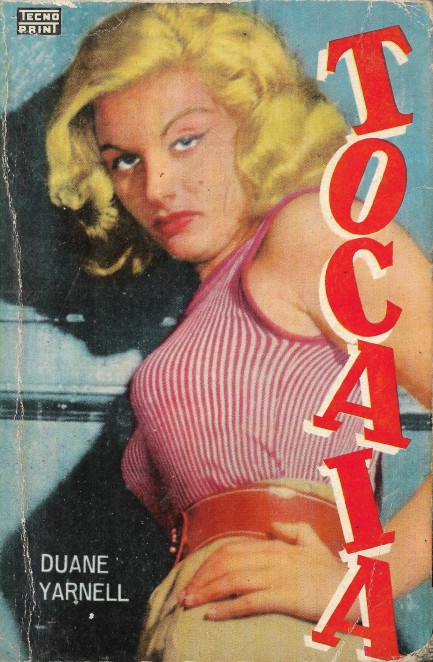
We wanted to call attention one last time to an interesting Facebook page dedicated to vintage crime paperbacks published in Brazil by Edições de Ouro and Editora Tecnoprint. We started our webpage in 2008 and back then we had a lot of company. Somehow or other, regretfully, we've outlasted many of them. Maybe in the age of Twitter and Instagram, blogs with actual words have died. But for that reason it's exciting to see someone launch something new—especially dedicated to such an exotic (from our point of view) niche of paperback style. It was actually launched in 2017, but we saw it only recently. We can tell you this—we love Brazil, have been there for carnaval, and if we'd known these books were down there we'd have brought back more than just a long lasting cachaça hangover. We knew Brazil had produced some pulp style paperbacks—much of the art was repurposed from U.S. editions—but we didn't know it was this extensive. Carnaval 2022? Well, probably not. But one day, return we will, to old Brazil.
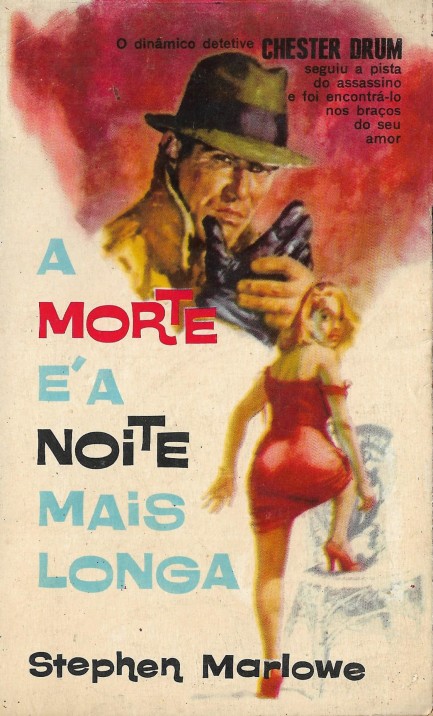
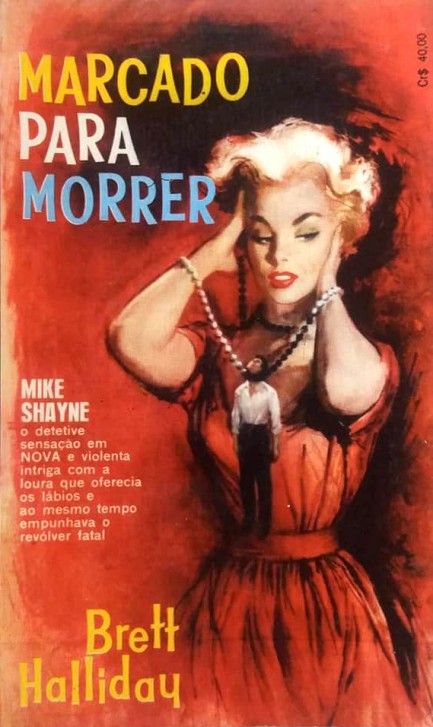

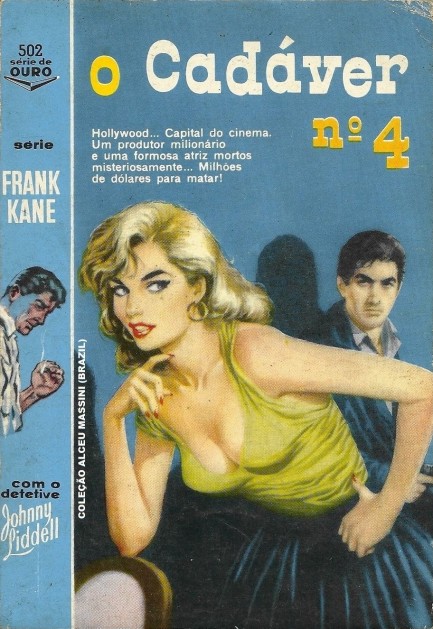



| Vintage Pulp | Nov 2 2021 |

American femme fatale turns up down Rio way.

Okay, let's try this again. Last week we posted this book and thought it had Peggy Cummins on the cover, but after having a short nap we awoke and saw that this was clearly not Cummins. Thanks for the e-mails, by the way, but we beat you to it. Hah! Anyway, you know by now one of our favorite ways to highlight Hollywood actresses is to note their usage on foreign paperback covers. This cool example from Brazil's Edições de Ouro was made for Irving Le Roy's Berlim: Os Pecados de Bárbara, and that's none other than Cleo Moore—not Peggy Cummins—having a smoke and a look around. The image comes from her classic 1953 film noir One Girl's Confession, a movie we talked about a while ago. This book was first published in France as Aventure Est-Ouest by Éditions Fleuve Noir in 1956, so it represents a cross-pollination of a different type—we've seen material move from the U.S. to many countries, but from France to Brazil is a new one for us. Le Roy, by the way, was aka Robert Georges Debeurre, and we've shown you one of his books before, here. The above image came from the Brazilian Facebook page we pointed out not long ago.
| Vintage Pulp | Sep 15 2021 |

Sun, sand, samba—and a high stakes bank heist. The perfect trip to Rio.

Above is the third cover we've found for the entertaining Davis Goodis novel The Burglar, but the first foreign edition. It's from Brazil, published by Edições de Ouro, and the cover star is actress Anne Francis from a promo image made when she was filming Girl of the Night in 1960. The cover, which we've touched up just a little, came from a Facebook page we recently found and highlighted that's dedicated to Edições de Ouro and Editora Tecnoprint. Once again, it's a page you should keep tabs on.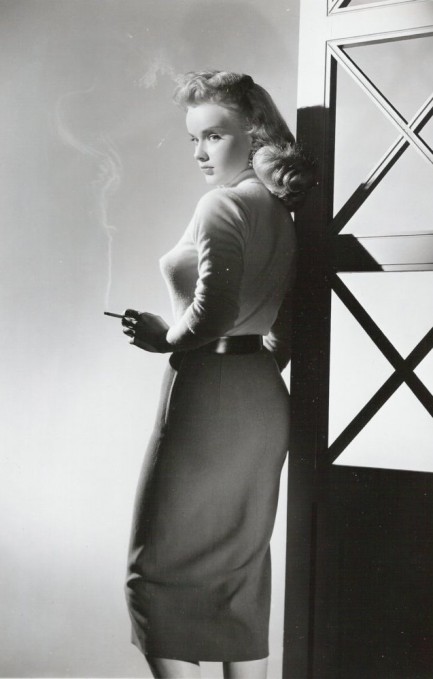
| Vintage Pulp | Aug 28 2021 |

Never leave a blonde on hold.

This is one tasty photo cover. It was was made for Bruno Fischer's A Bela Assassina, which is a Portuguese translation of The Lady Kills, put out in 1951 by the Brazilian publisher Edições de Ouro, and is number five in its series Seleção Criminal. We've little doubt the cover star is a known actress, by the way, but we can't place her. Feel free to clue us in. It took us a while to figure out where this came from, but we finally traced it to a Facebook page dedicated to Brazilian vintage paperbacks. There's some nice stuff over there calling your name, so it's certainly worth a look. You can also see another Bruno Fischer book from Brazil here.
| Mondo Bizarro | Jul 22 2021 |

Lord of the Rings fan raises his game, lowers his life prospects.


An interesting item began popping up online yesterday about Fernando Franco de Oliveira, an avid Lord of the Rings fan from Brazil who made himself look like an orc with the help of tattoos, dermal implants, and surgery—including an operation to remove his nose. The result is what you see above, and well, it's both atrocious and very sad. We liked the Lord of the Rings trilogy, but it's junior high literature. Imaginative and well written to be sure, but a typical person aged twelve to fourteen—like we were when we first came across it—would be able to read the books and enjoy them. Same with the movies. They're officially rated for filmgoers aged thirteen and up.
The point is that neither the books nor movies are something to let influence your life to the extent that you get your eyeballs tattooed black and your ears crimped. There's not a lot to say about this other than  that the obsessive quest for individuality on a planet of almost eight billion people has claimed another victim—a mentally ill one. Yes, yes, we know. You're not supposed to say things like that these days. You're supposed to be supportive and non-judgmental, but we can do what we want on our website, and we judge that de Oliveira is mental.
that the obsessive quest for individuality on a planet of almost eight billion people has claimed another victim—a mentally ill one. Yes, yes, we know. You're not supposed to say things like that these days. You're supposed to be supportive and non-judgmental, but we can do what we want on our website, and we judge that de Oliveira is mental.
 that the obsessive quest for individuality on a planet of almost eight billion people has claimed another victim—a mentally ill one. Yes, yes, we know. You're not supposed to say things like that these days. You're supposed to be supportive and non-judgmental, but we can do what we want on our website, and we judge that de Oliveira is mental.
that the obsessive quest for individuality on a planet of almost eight billion people has claimed another victim—a mentally ill one. Yes, yes, we know. You're not supposed to say things like that these days. You're supposed to be supportive and non-judgmental, but we can do what we want on our website, and we judge that de Oliveira is mental.Being able to express himself rationally, de Oliveira can of course present the façade of a sane person, but his outward appearance makes a mockery of that, because to do what he's done is to deliberately destroy one's life, or—even worse—to not understand that to do it is to destroy one's life. True, he was never a beauty queen, as you see in the soft-bodied, monobrow dominant photo at right. But he still had a nose. And anyone with a nose has a shot at good things in life.
De Oliveira will of course tell you his existence is good, that people tell him he looks cool, that chicks dig it or he has a committed partner who loves it, that he was never happy until finding himself in this way, that it even earns him money, and anyone who hates on him is really the one with problems, but he'll be using his surgically forked tongue to lie through his vampire teeth. He's insane. End of story. He's even crazier than Caius Veiovis and that guy probably bites the heads off bats. All that said, we'd still rather hang out with Orc Boy than someone who bases their life upon Atlas Shrugged. At least he's decided to be a monster only on the outside.
| Vintage Pulp | Feb 4 2021 |

Everybody's gotta go sometime.
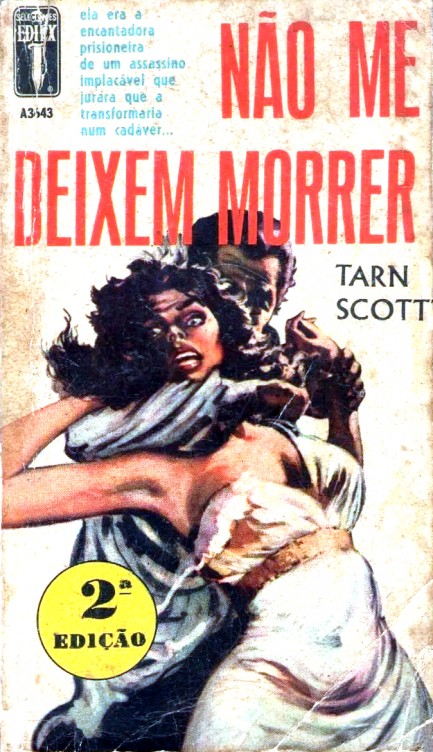
We don't find much Brazilian pulp, but above is an interesting—if battered—cover for Tarn Scott's, aka Walter Szot and Peter G. Tarnor's Não Me Deixem Morrer, which is a translation of their U.S. released 1957 kidnapping tale Don't Let Her Die, a book we read and enjoyed a few years ago. This was put out by the Rio de Janeiro based imprint Ediex for its Selecrimes series in 1964. We gather that Ediex was a branch of the Mexico City publisher Editormex Mexicana, and that the company released quite a few translations of English crime books during the 1960s.
The art, which is by an unknown, is a low rent copy of that found on the cover of 1958's The Lusting Drive by Ovid Demaris, which you see below. That cover is also uncredited, but some think it's by Ernest Chiriacka. We agree. In fact, we don't think there's any doubt. Not only is the style—particularly of the female face—a dead match, but Chiriacka was pumping out illos by the cartload for Gold Medal during the mid- to late-1950s. So we're going to go ahead and call this one a lock. We may share a few more Brazilian paperback covers in a bit. Stay tuned.
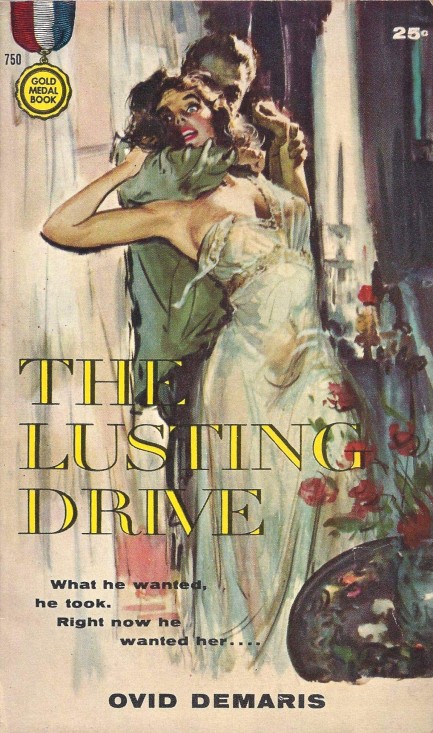
| Femmes Fatales | May 28 2020 |

It's not an N95 mask but it's all I've got.
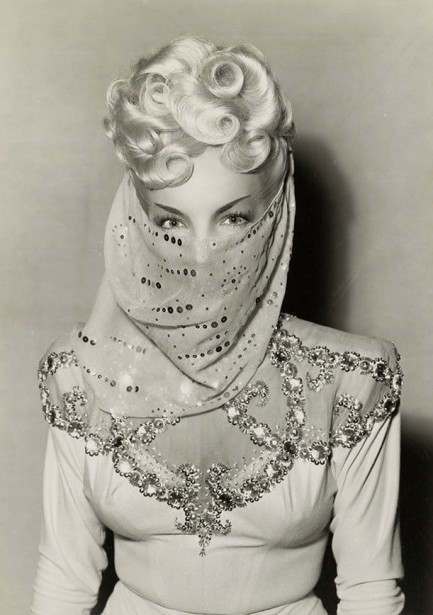
Visual references change. This is obviously a veil, but when we saw it the first thing that came to mind was mask. It's an elegant, somewhat erotic shot, which is no wonder, as veils are generally seen as sexy. Masks, meanwhile, are not, but might that change? There's already mask porn. Doesn't do anything for us, but maybe we're just not cutting edge enough. Anyway, this rare photo was made to promote the 1947 Groucho Marx comedy Copacabana, and the face behind the veil is that of legendary Portuguese-born Brazilian singer Carmen Miranda. We know what you're thinking. This can't be Carmen Miranda. But it is. In the film she's trying to hide her identity, which is why she's made-up so pale and is wearing a blonde wig. Her ruse worked, and not just in Copacabana—websites have misidentified this shot as everyone from Chili Williams to Lili St. Cyr.





































































